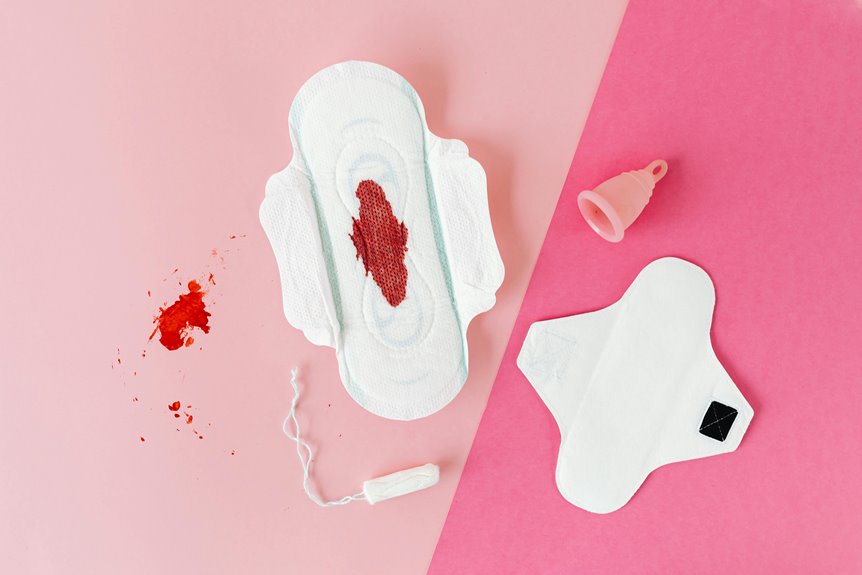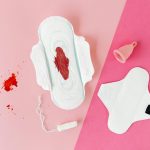To remove old blood stains from your sheets, start by soaking the stained area in cold water mixed with mild detergent for at least 30 minutes. If the stain persists, try applying hydrogen peroxide or an enzymatic cleaner, which effectively break down proteins. Lemon juice can also help due to its acidity. Always rinse thoroughly afterward. Quick action is key to success, and there are even more techniques to tackle stubborn stains.
Table of Contents
Key Takeaways
- Start by soaking the stained sheets in cold water with mild detergent or baking soda for at least 30 minutes to loosen the stain.
- Apply hydrogen peroxide or an enzymatic cleaner directly to the old blood stains to break down the proteins effectively.
- Use a mixture of lemon juice and cold water to dab onto the stains for natural bleaching and stain removal.
- Rinse the sheets thoroughly in cold water after treatment to remove any soap or chemical residue.
- If stains persist, repeat the soaking and treatment process until the stains are fully removed.
Immediate Action for Blood Stains
When you spot a blood stain on your sheets, act quickly to prevent it from setting in. First, grab some cold water and blot the stain gently with a clean cloth or paper towel. Don’t rub it; that’ll only push the blood deeper into the fabric.
If possible, turn your sheets inside out to treat the stain from the back, allowing the blood to lift away. Avoid using hot water, as it can cook the proteins in the blood, making it harder to remove.
If you have salt or baking soda on hand, sprinkle it over the stain to help absorb the blood. Remember, the quicker you act, the better your chances are of completely removing the stain.
Soaking Techniques for Effective Removal
After you’ve blotted the blood stain and taken immediate action, soaking your sheets can further help lift any remaining traces.
Start by filling a basin or bathtub with cold water, as hot water can set the stain. Add a mild detergent or a natural alternative like baking soda. Submerge the stained area completely, allowing it to soak for at least 30 minutes.
For tougher stains, you can gently agitate the fabric in the water. After soaking, rinse the sheets thoroughly in cold water to remove any soap residue.
If the stain persists, repeat the soaking process until you see improvement. Finally, wash the sheets in cold water again to guarantee complete removal before drying.
Chemical Treatments for Stubborn Stains
If you’ve tried soaking but stubborn blood stains remain, chemical treatments can provide an effective solution. You can opt for hydrogen peroxide, which works well for fresh stains, or enzymatic cleaners, designed to break down proteins in blood. Bleach is another option, but use it cautiously as it can damage fabrics.
Here’s a quick comparison of some chemical treatments:
| Treatment | Effectiveness | Fabric Safety |
|---|---|---|
| Hydrogen Peroxide | High (fresh stains) | Safe for whites |
| Enzymatic Cleaners | High (varied stains) | Safe for most fabrics |
| Bleach | Very High | Risky for colors |
Choose the right treatment based on your fabric type and stain age to maximize your chances of success.
Natural Methods for Blood Stain Removal
If you prefer natural solutions, lemon juice can be a powerful ally in removing blood stains from your sheets.
The acidity helps break down the stain, while exposure to sunlight can enhance the cleaning process.
Let’s explore how these methods can effectively restore your linens.
Lemon Juice Application
Lemon juice is a powerful natural remedy for tackling old blood stains on sheets. Its acidity helps break down the proteins in the blood, making it easier to lift the stain.
Here’s how you can effectively use lemon juice for stain removal:
- Prepare the Solution: Mix equal parts of lemon juice and cold water in a bowl.
- Apply the Mixture: Soak a clean cloth in the solution, then gently dab it onto the blood-stained area. Avoid rubbing, as this may spread the stain.
- Rinse and Wash: After letting it sit for about 30 minutes, rinse the area with cold water and wash your sheets as usual.
This natural method not only brightens your sheets but also avoids harsh chemicals. Give it a try!
Sunlight Exposure Benefits
While using lemon juice can effectively tackle blood stains, harnessing the power of sunlight is another excellent natural method for removal. Sunlight acts as a natural bleach, helping to lighten and break down stubborn blood stains on your sheets.
Here’s how sunlight exposure can benefit you:
| Benefit | Description |
|---|---|
| Natural Bleach | Sunlight can lighten stains without harsh chemicals. |
| Bacteria Killer | UV rays help kill bacteria, promoting cleanliness. |
| Odor Eliminator | Fresh air and sunlight help eliminate odors. |
| Energy Efficient | No need for extra energy or water in this method. |
| Eco-Friendly | It’s a sustainable option for stain removal. |
Just lay your sheets outside for a few hours, and you’ll notice the difference!
Preventing Blood Stains From Setting
To keep blood stains from setting into your sheets, act quickly as soon as you notice the mark. The sooner you respond, the easier it’ll be to remove the stain.
Here’s what you should do:
- Rinse with Cold Water: Immediately run cold water through the back of the stain. This helps to push the blood out instead of driving it deeper into the fibers.
- Use Soap or Detergent: Apply a small amount of gentle soap or liquid detergent directly onto the stain. Gently rub it in with your fingers to break down the proteins in the blood.
- Blot, Don’t Rub: Use a clean cloth or paper towel to blot the stain, absorbing as much blood as possible without spreading it further.
Acting fast can make all the difference!
Handling Challenging Cases of Blood Stains
Even with prompt action, some blood stains can prove stubborn and resistant to removal. In such cases, don’t lose hope.
Start by soaking the stained area in cold water for at least 30 minutes. This helps loosen the stain. Next, apply a mixture of hydrogen peroxide and liquid dish soap directly onto the stain. Let it sit for about 10 minutes.
If that doesn’t work, try an enzymatic cleaner, which breaks down proteins in the blood. After treating, wash your sheets on the hottest setting safe for the fabric.
If the stain persists, repeat the process or consult a professional cleaner. Remember, patience is key; persistent stains may require multiple attempts to fully remove.
Frequently Asked Questions
Can I Use Hot Water to Remove Blood Stains?
Imagine you’ve spilled spaghetti sauce on your favorite shirt. Using hot water might set the stain instead of removing it. So, when it comes to blood stains, avoid hot water; stick to cold for better results.
Are Blood Stains Permanent if Not Treated Quickly?
Yes, blood stains can become permanent if you don’t treat them quickly. The longer they sit, the harder they are to remove. Acting fast gives you the best chance at getting rid of them completely.
What Fabrics Are Most Difficult to Clean Blood Stains From?
Imagine a canvas, marred by a vivid scar; delicate fabrics like silk and velvet often absorb stains deeply, making them harder to cleanse. You’ll find cotton and polyester much easier to revitalize.
Can I Use Vinegar to Treat Blood Stains?
You can use vinegar to treat blood stains effectively. Its acidity helps break down the proteins in the stain. Just mix it with water, apply it to the stain, and let it sit before rinsing.
How Can I Prevent Future Blood Stains on My Sheets?
To keep your sheets pristine, think of them as a canvas. You can use protective mattress covers, encourage proper hygiene during monthly cycles, and avoid rough handling to prevent those pesky blood stains from appearing again.
- Spilled Espresso on a White Denim Skirt - June 9, 2025
- Butter Stain on a Silk Shirt, How to Treat - June 9, 2025
- Cleaning Ground-In Grass Stains From Polyester Sports Socks - June 9, 2025






